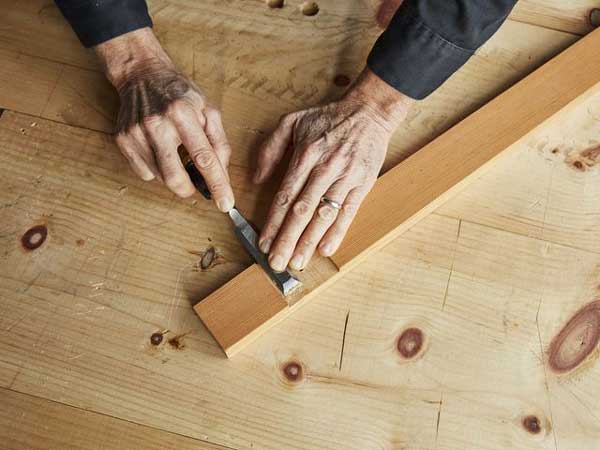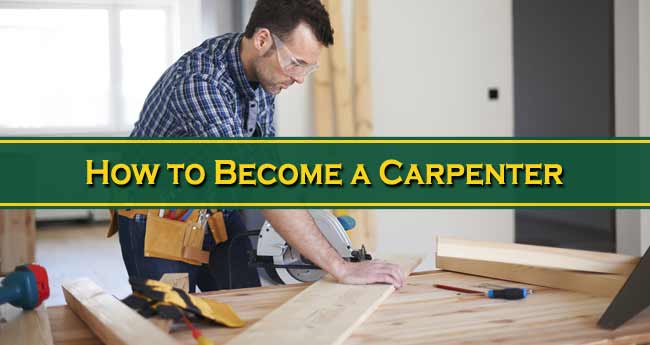Carpentry is not an occupation, but it is a classic form of art. It involves activities like cutting, shaping, and furniture created.
Carpenters have been creating unusual structures, and exquisite pieces of wooden furniture and also some day-to-day used wooden items over the years now.
Carpentry requires unique skills to build such awe-inspiring arrangements made of wood or other materials.
The art and craft of carpentry need precision and accuracy to use the tools since any small mistake during the making process of an object proves to be a costly one as they are irreversible errors.
The skill of carpentry can be learned through a training program or by getting good work experience.
Again, carpentry requires expertise and interpersonal skills, problem-solving skills, creativity and innovativeness to build artistic structures.
The challenges in the field of carpentry are extreme. However, the opportunities are rising across the globe for talented carpenters in several commercial projects.
Carpentry Guidelines for a Beginner

Here are a few guidelines that will benefit you with the initial boost and acknowledge you what the job requires if you are a beginner in the field of carpentry;
Understanding What Carpentry is and What a Carpenter Does
A carpenter is a person who builds and fixes structures and objects made out of wood.
It involves the repairing and fixing of wooden structures like a staircase, door frames and all types of wooden furniture.
A carpenter is extremely skilled with their hands and builds all kind of objects with accuracy and precision.
An aspiring carpenter should be passionate about various forms of wood structures and should incorporate creativity while building anything.
Having Physical Fitness
A carpenter’s job requires a lot of physical strength since the work asks for heavy lifting.
It takes tons of hard work and demands muscle strength to pull off the work of building wooden objects with perfection.
More so, the job also asks for a reasonable level of hand-eye coordination. This is because carpenters use a number of tools and are either at risk to get injured or damaging the wood.
Additionally, a carpenter has to be on his feet for most of the times doing the physical labor. A good sense of balance is also a requirement.
Educational Strength
The intricate art of carpentry is heavily dependent on mathematics.
Carpenters should be good at mathematics. Having efficient oral communication and language skills is a requisite.
Possessing the knowledge of physical science is an added benefit.
See Also: How to Join Two Pieces of Wood Side By Side?
Characteristics of a Good Carpenter
- Should Know the Precise Detailing of the Work: Carpentry involves the work of cutting wood pieces and objects according to the measurements.
Any small mistake can have a negative impact on the structure being created. More so, carpenters should possess the talent of identifying the problem with a wooden structure and assessing the issues.
- Possessing Problem-solving Ability: There may be many challenges coming in front of the carpenter while working. Such as a tool may stop working, or board may break, etc.
But finding effective alternatives in order to solve the problem in real quick time and delivering the work at the right interval is a skill a carpenter must be efficient at.
- Learning to Handle Tools: With a plethora of carpentry tools available, it is essential for every beginner to learn certain basic tools which are used. These are the ones every beginner should learn to use and operate.
Carpentry Tools
Here is a list of carpentry tools aspiring carpenter should know to use;
- Hammer: For any carpentry task, hammering and pulling out nails is one of the most important and fundamental work. Nails and hammers are crucial for any carpentry project.
- Saw: There are ample kinds of saw available in the market. A saw is considered to be one of the most useful tools for a carpenter as it is used on a daily routine for every project.
Practicing to use the saw is an excellent task to start with for a beginner.
- Measuring Tape: Measurements need to be accurate for building ideal wooden structures. The ability to make perfect measurements is a sign of a great carpenter.
- A Spirit Level: Levels are a crucial aspect when it comes to symmetry and straight lines with a view to achieving accuracy. Whether a line is perfectly horizontal or not, it is identified by placing the spirit level on a plank held up to the wall.
- Marking Tools: For exact and pinpoint cutting, measurements are marked with marking tools. This facilitates each time when cutting, nailing or sawing is needed.
If one is a beginner, then the individual concerned needs to look for opportunities to start with carpentry.
There are options for beginners to get training so that they can attain the required skills in the long run.
Here are a few options:
- Several High Schools That Give Basic Training: Some high schools provide basic training to learn the art of carpentry by teaching how to operate and use saws and drills. This will also lend some amount of experience to the beginner.
- Get Advice from an Expert: Speaking to a person who knows various apprentice and carpentry training programs will help the beginner to get access to the opportunities available.
A Step Forward – Apprentice in Carpentry

Apprenticeship is one of the certified ways to get a significant amount of experience and training. Most of the beginner level carpenters start their careers in apprentice.
The apprentice involves formal training as carpentry by performing tasks such as reading blueprints, checking safety regulations, using mathematical calculations, etc.
These are the activities included on the path to becoming a skilled carpenter. Some of the apprentices also provide specialized training.
Having met the criteria to become an apprentice, one can join an apprenticeship under the guidance of a skilled trainer allows becoming a master of carpentry.
To conclude, if one aspires to be in the field of carpentry and build innovative structures and objects, one needs to start from the basics of woodworking.
Practicing of making different arrangements and objectives with the help of a variety of tools along with a touch of creativity will eventually aid in building dynamic objects with better finishing.

